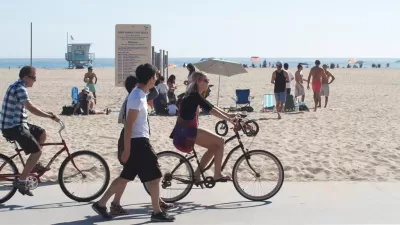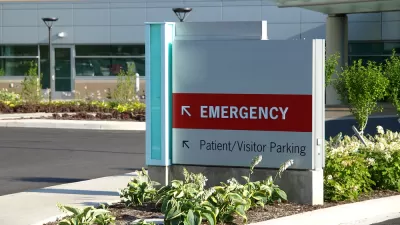According to preliminary estimates from the National Safety Council, 38,300 people were killed on U.S. roads in 2015, an 8 percent jump from 2014. In fact, the annual increase is the most in half a century. Note that the figure differs from NHTSA's.
In addition to a record increase in fatalities, 4.4 million were seriously injured on U.S. roads, states the press release, making "2015 likely the deadliest driving year since 2008."
The estimate is subject to slight increases or decreases as data mature. National Safety Council (NSC) has issued annual traffic fatality estimates since 1921. Over the last three years, preliminary estimates have fallen within 1% of final counts.
"The National Safety Council uses National Center for Health Statistics data from the Centers for Disease Control and Prevention (CDC) because it includes fatalities that occur on non-public roads, whereas the National Highway Traffic Safety Administration [(NHTSA) a division of the U.S. Department of Transportation] data includes only fatalities on public roads," stated Ken Kolosh, manager of statistics at NSC, in an email.
"In addition CDC counts deaths that occur within 12 months of the crash while NHTSA's cutoff is 30 days," stated Kolosh. "We want to include the most accurate and comprehensive data as possible in our estimate."
According to NHTSA estimates, traffic deaths "show a steep 9.3 percent increase for the first nine months of 2015." [Also posted here.] NHTSA has yet to issue its complete 2015 report.
Different starting point for NHTSA and NSC
"NHTSA’s Fatal Analysis Reporting System (FARS) figures for 2014 show 32,675 people died in motor vehicle crashes in 2014, a 0.1-percent decrease from the previous year," states their November 24, 2015 press release. "An additional 2.3 million people were injured in crashes in 2014," notes the 2014 Crash Data Key Findings [PDF].
NSC reported that traffic fatalities totaled 35,398 for 2014, "a less than 0.5% increase from 2013," in their supplemental estimate information [PDF]. Injuries also will likely show a major gap. "The National Safety Council defines 'serious injuries' as those requiring medical attention," notes their press release, which may explain the large figure (4.4 million) compared with NHTSA's 9-month figure of 2.3 million people
Finally, an appropriate reminder from Deborah A.P. Hersman, NSC president and CEO. "Driving a car is one of the riskiest activities any of us undertake in spite of decades of vehicle design improvements and traffic safety advancements."
FULL STORY: Motor Vehicle Deaths Increase by Largest Percent in 50 Years

Study: Maui’s Plan to Convert Vacation Rentals to Long-Term Housing Could Cause Nearly $1 Billion Economic Loss
The plan would reduce visitor accommodation by 25,% resulting in 1,900 jobs lost.

North Texas Transit Leaders Tout Benefits of TOD for Growing Region
At a summit focused on transit-oriented development, policymakers discussed how North Texas’ expanded light rail system can serve as a tool for economic growth.

Why Should We Subsidize Public Transportation?
Many public transit agencies face financial stress due to rising costs, declining fare revenue, and declining subsidies. Transit advocates must provide a strong business case for increasing public transit funding.

How to Make US Trains Faster
Changes to boarding platforms and a switch to electric trains could improve U.S. passenger rail service without the added cost of high-speed rail.

Columbia’s Revitalized ‘Loop’ Is a Hub for Local Entrepreneurs
A focus on small businesses is helping a commercial corridor in Columbia, Missouri thrive.

Invasive Insect Threatens Minnesota’s Ash Forests
The Emerald Ash Borer is a rapidly spreading invasive pest threatening Minnesota’s ash trees, and homeowners are encouraged to plant diverse replacement species, avoid moving ash firewood, and monitor for signs of infestation.
Urban Design for Planners 1: Software Tools
This six-course series explores essential urban design concepts using open source software and equips planners with the tools they need to participate fully in the urban design process.
Planning for Universal Design
Learn the tools for implementing Universal Design in planning regulations.
Ascent Environmental
Borough of Carlisle
Institute for Housing and Urban Development Studies (IHS)
City of Grandview
Harvard GSD Executive Education
Toledo-Lucas County Plan Commissions
Salt Lake City
NYU Wagner Graduate School of Public Service





























